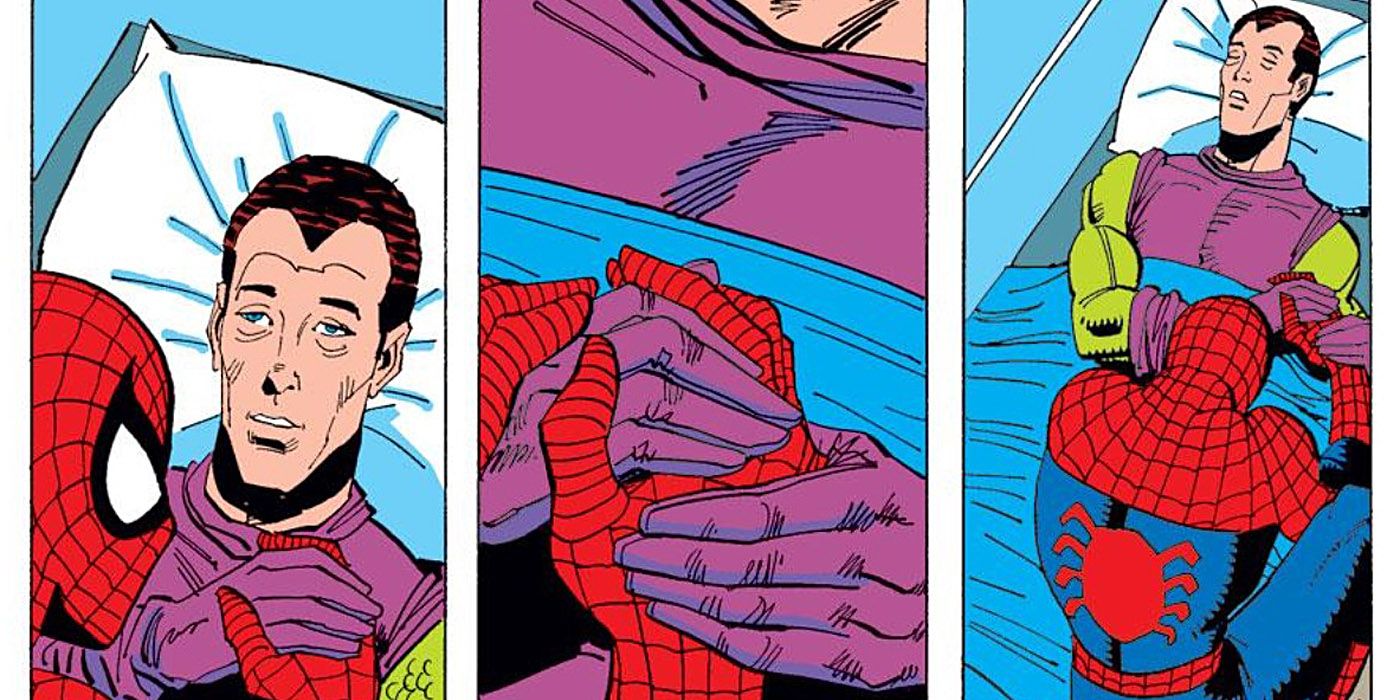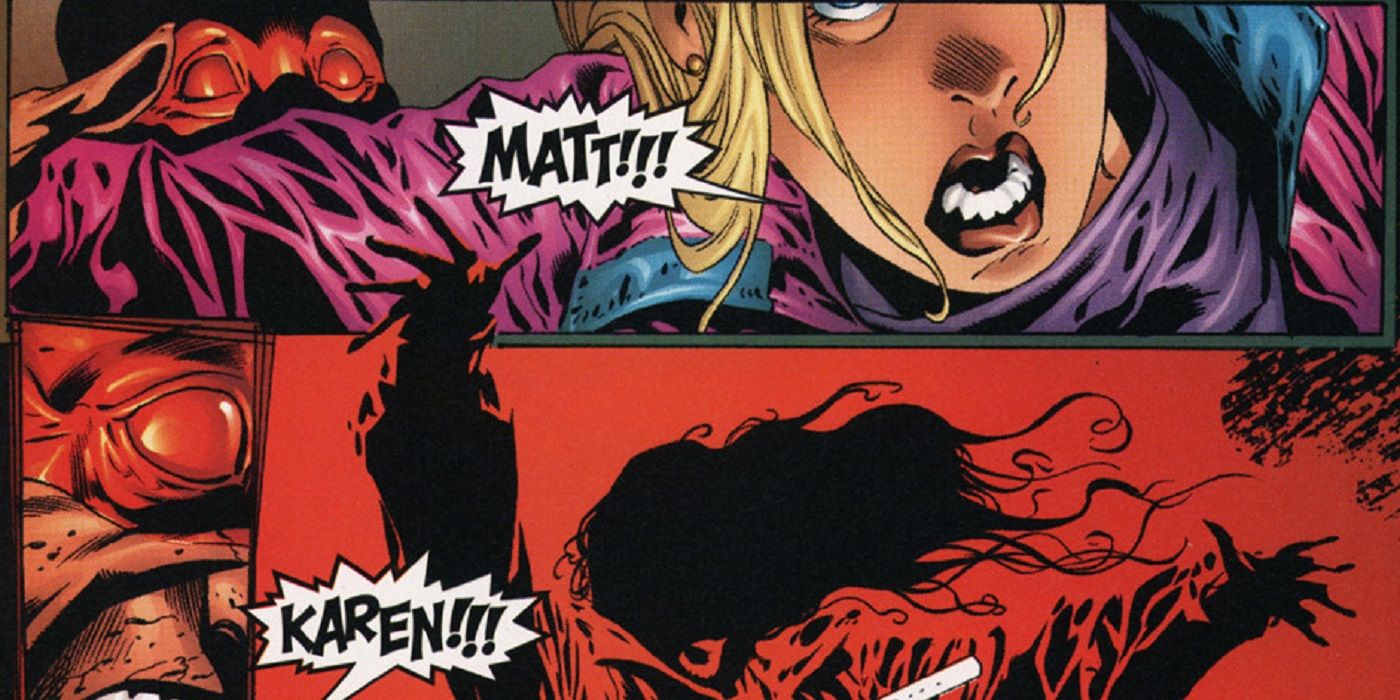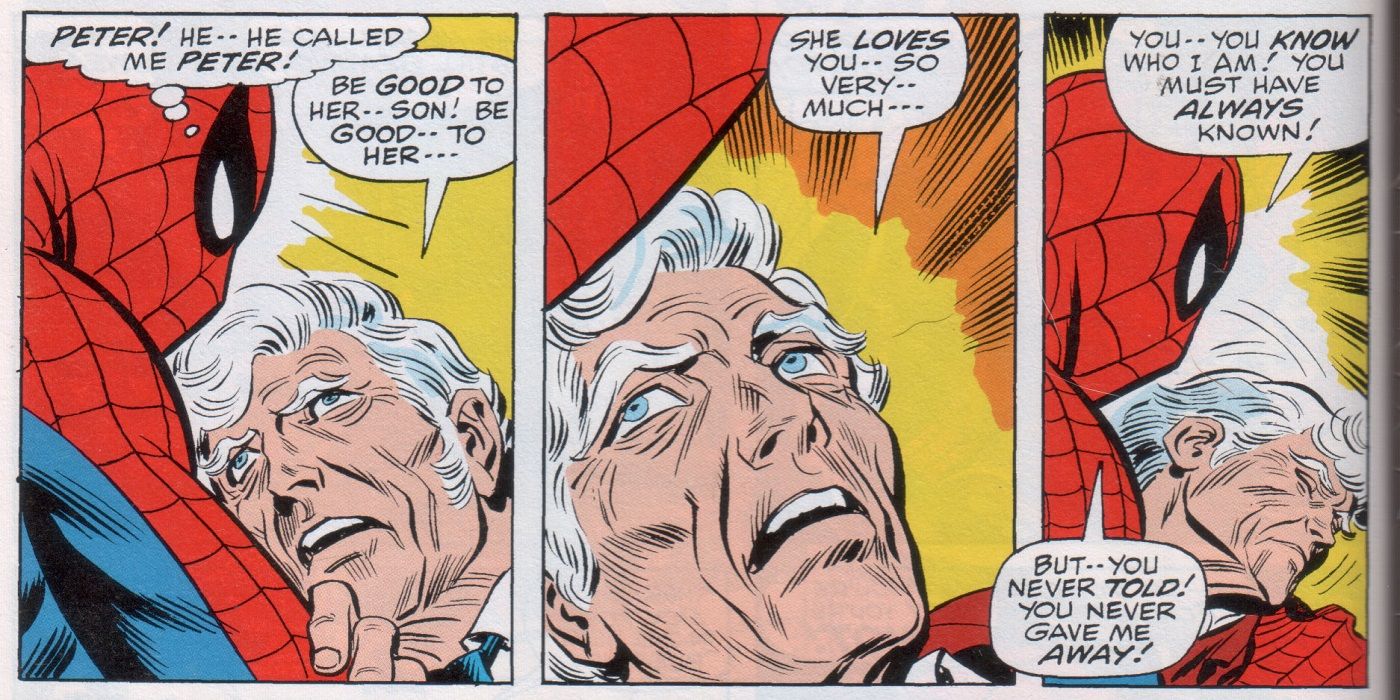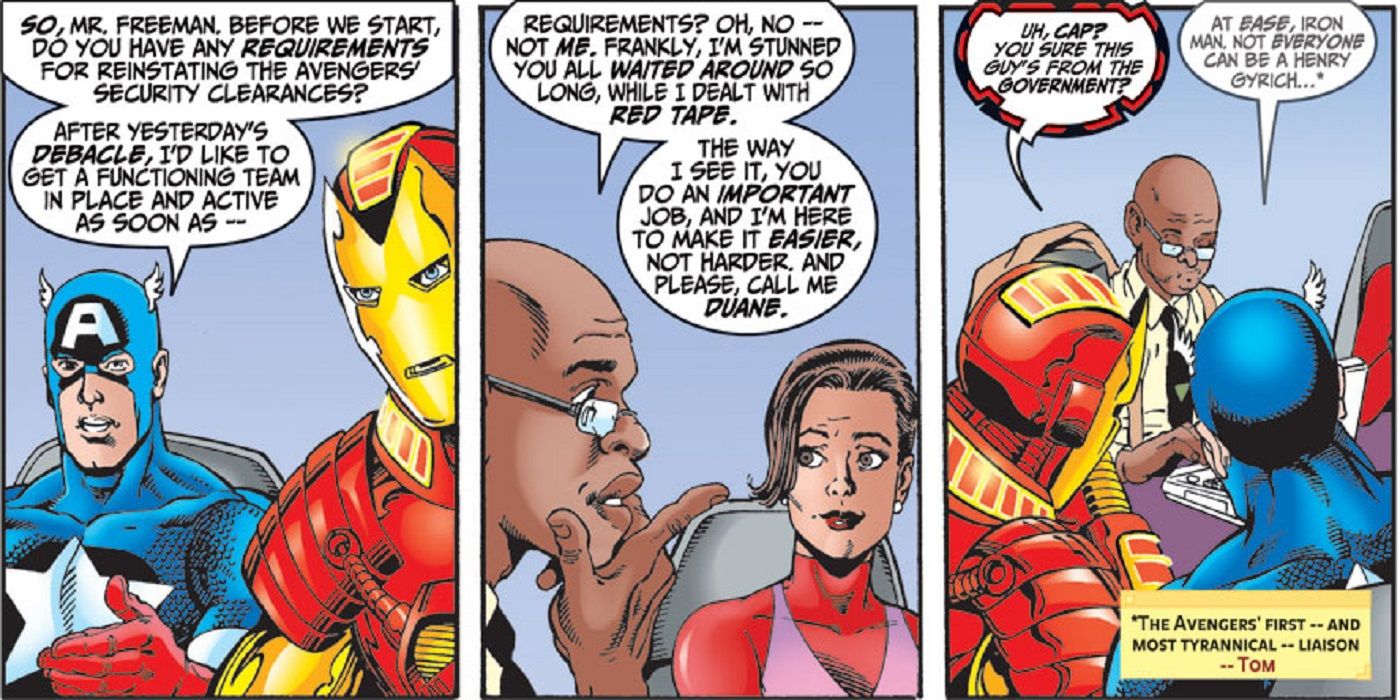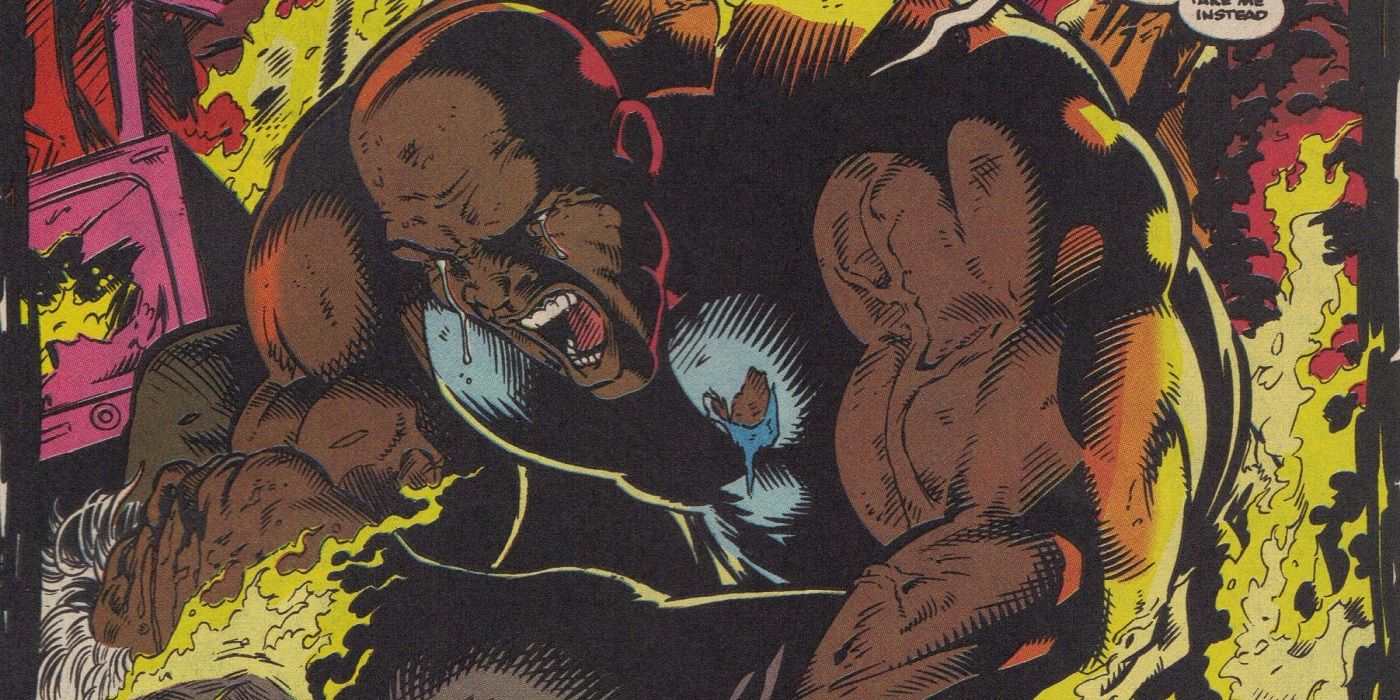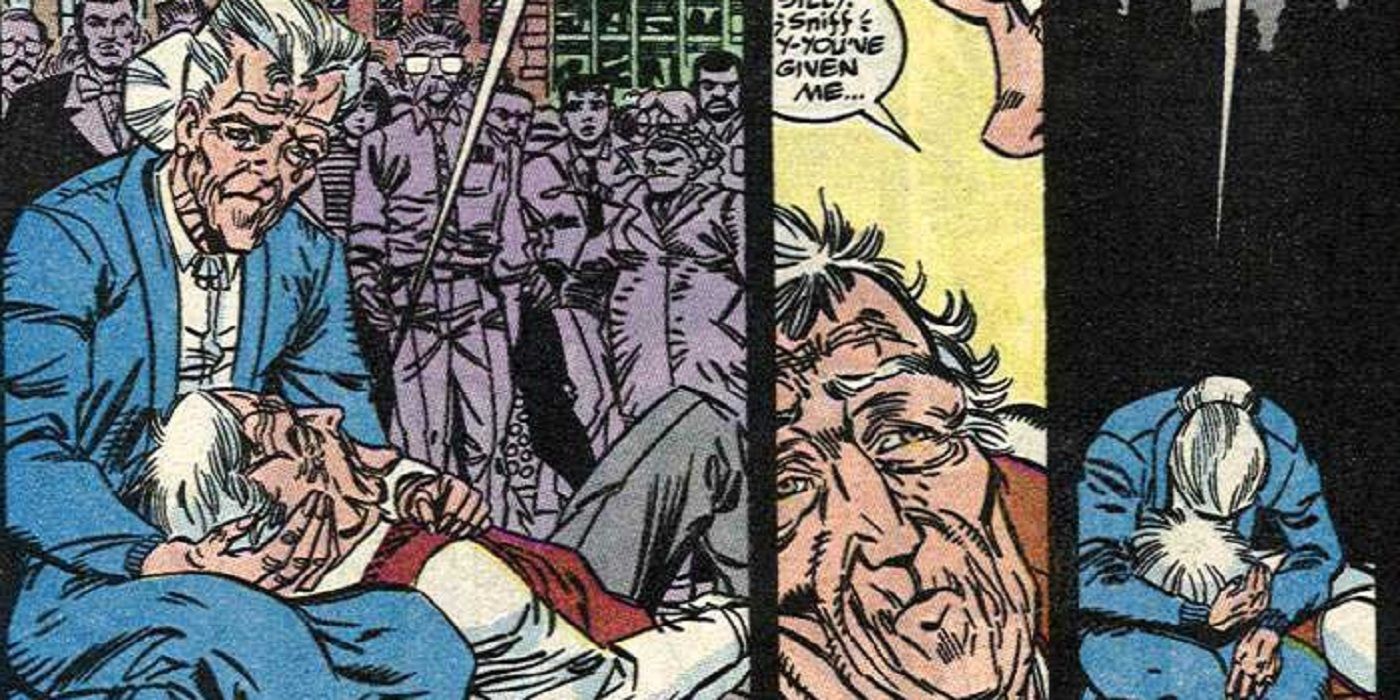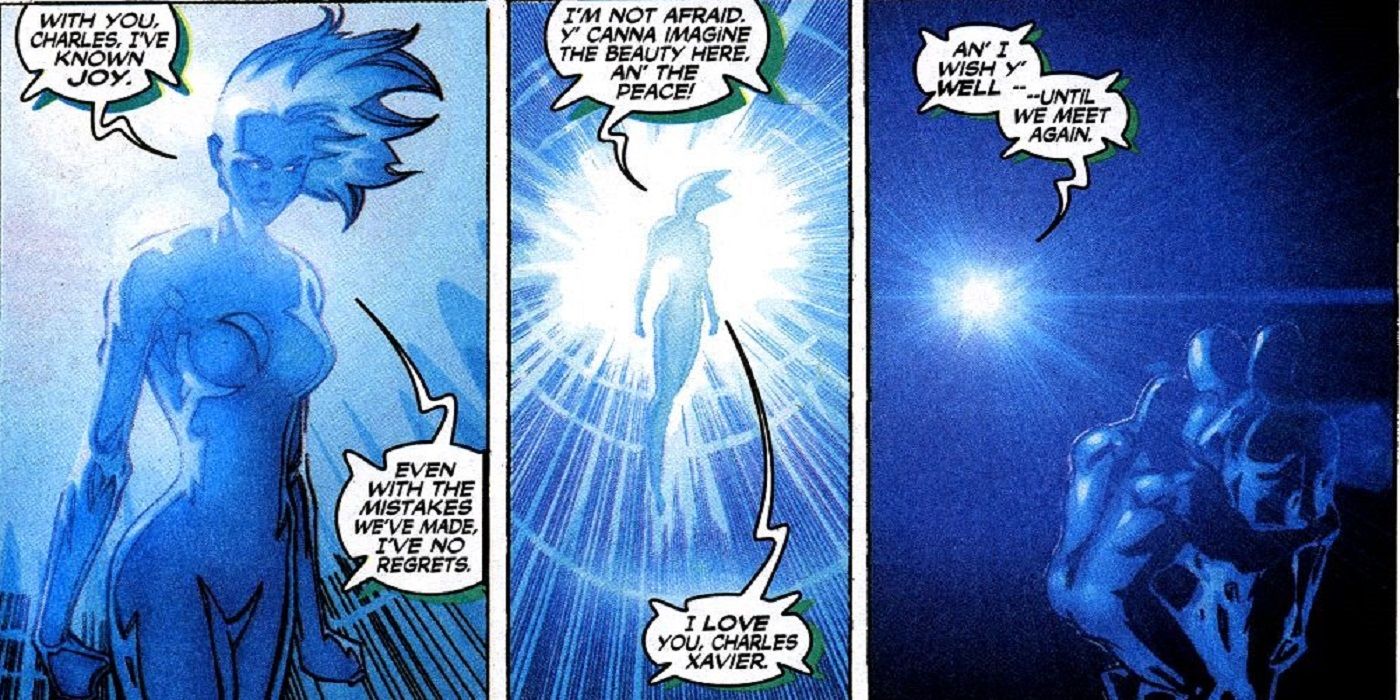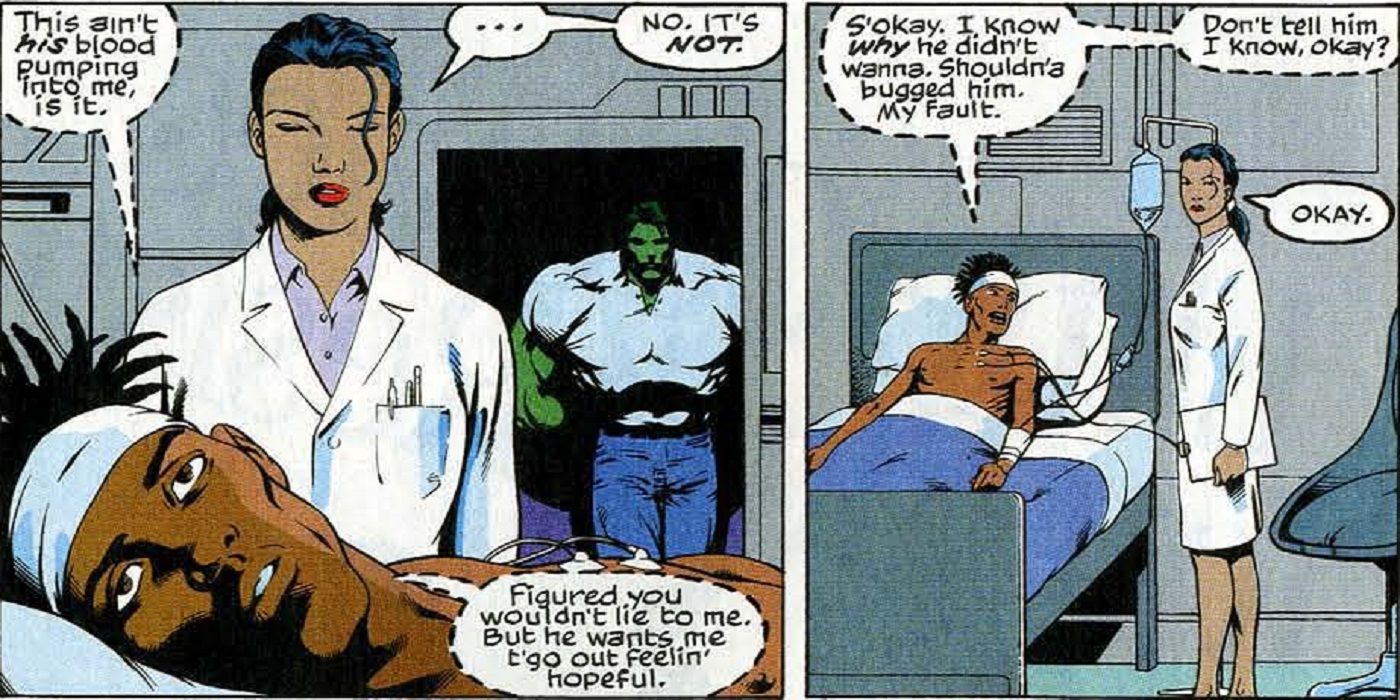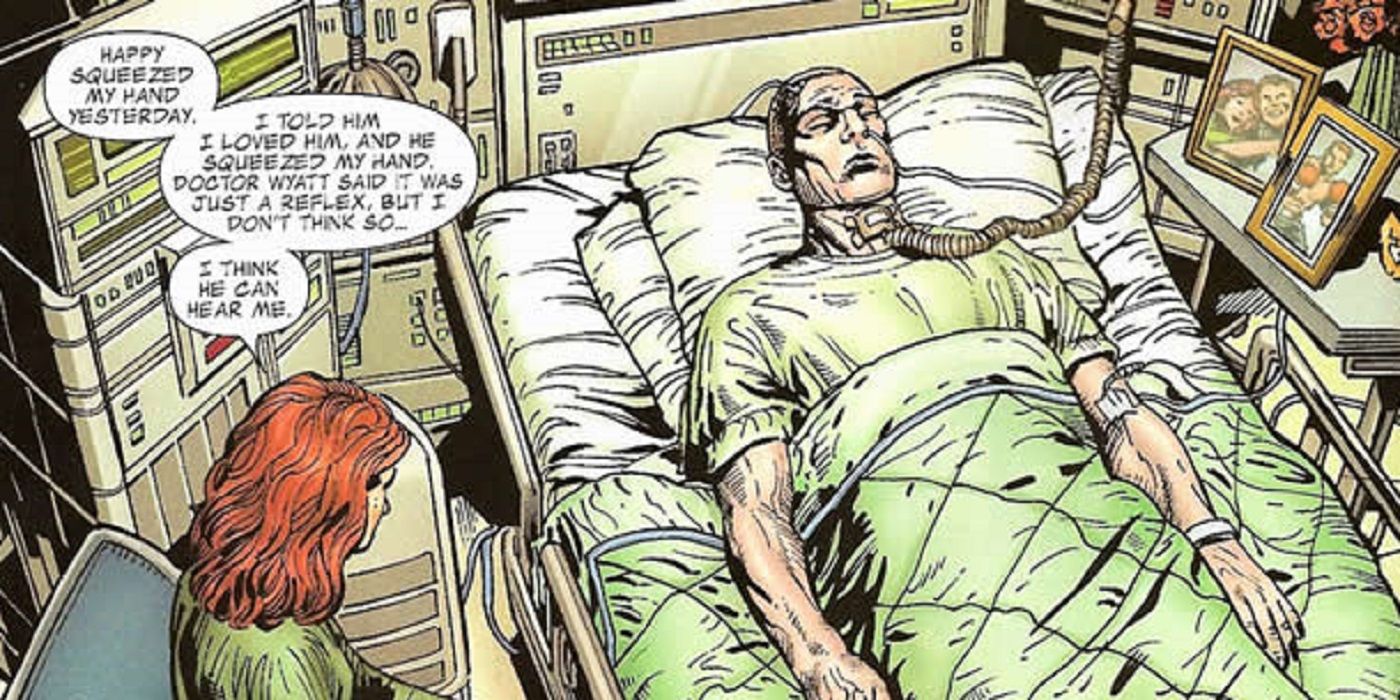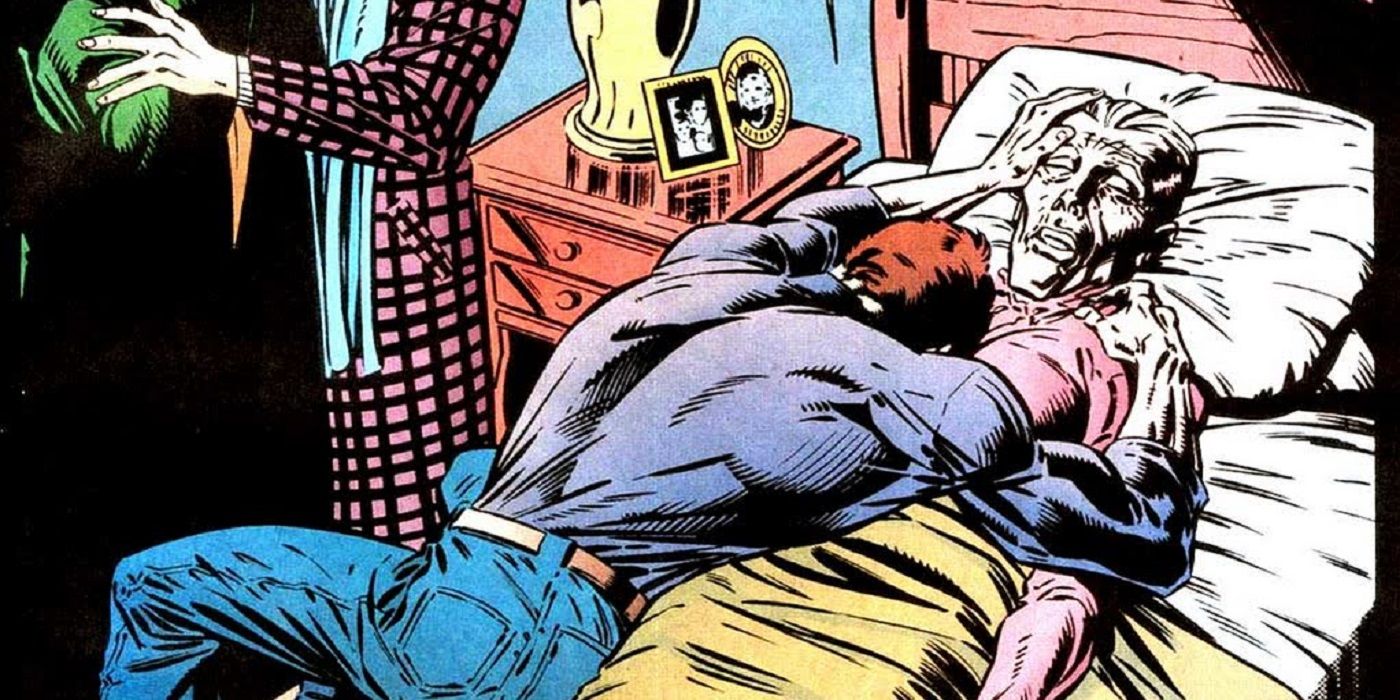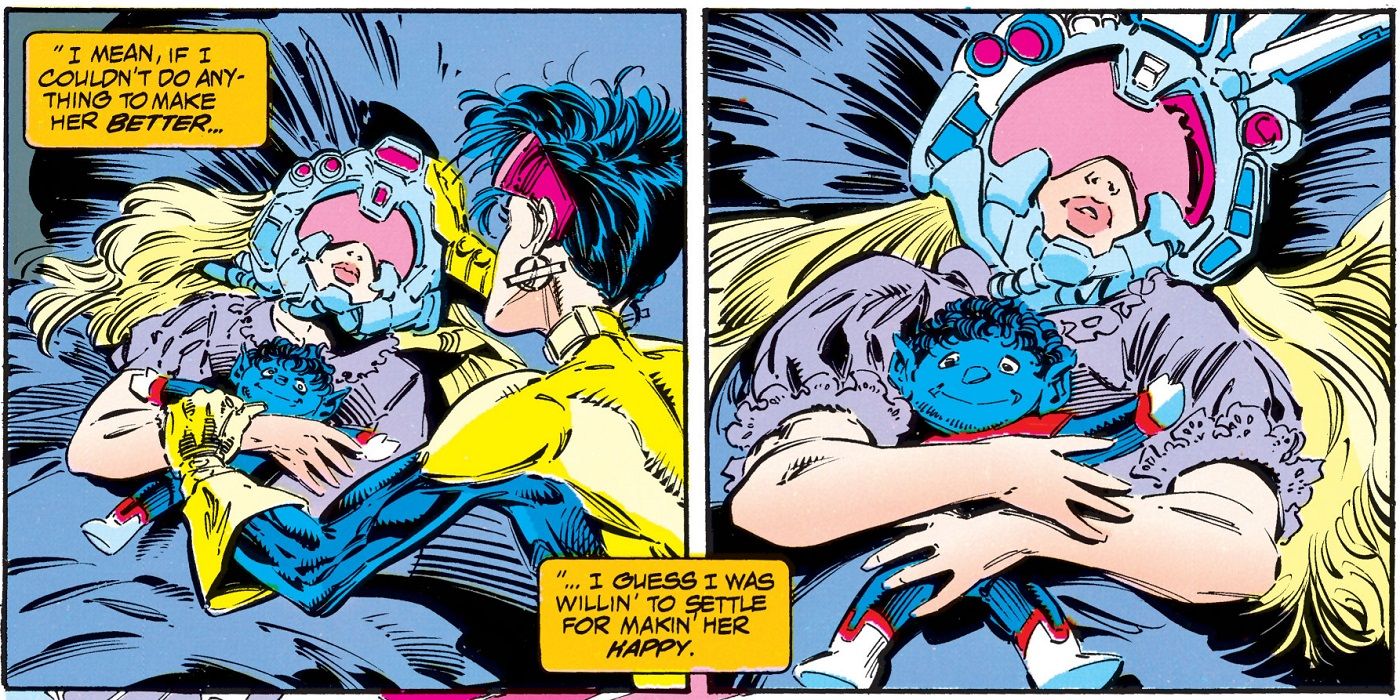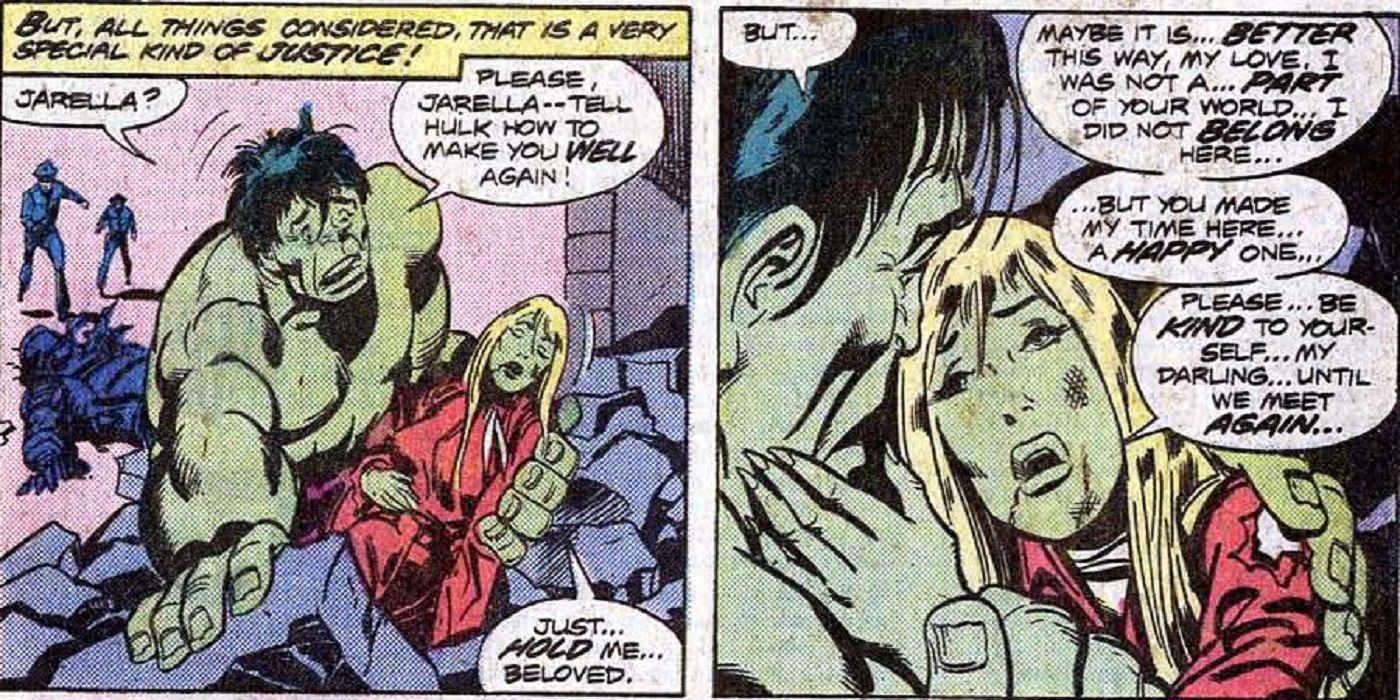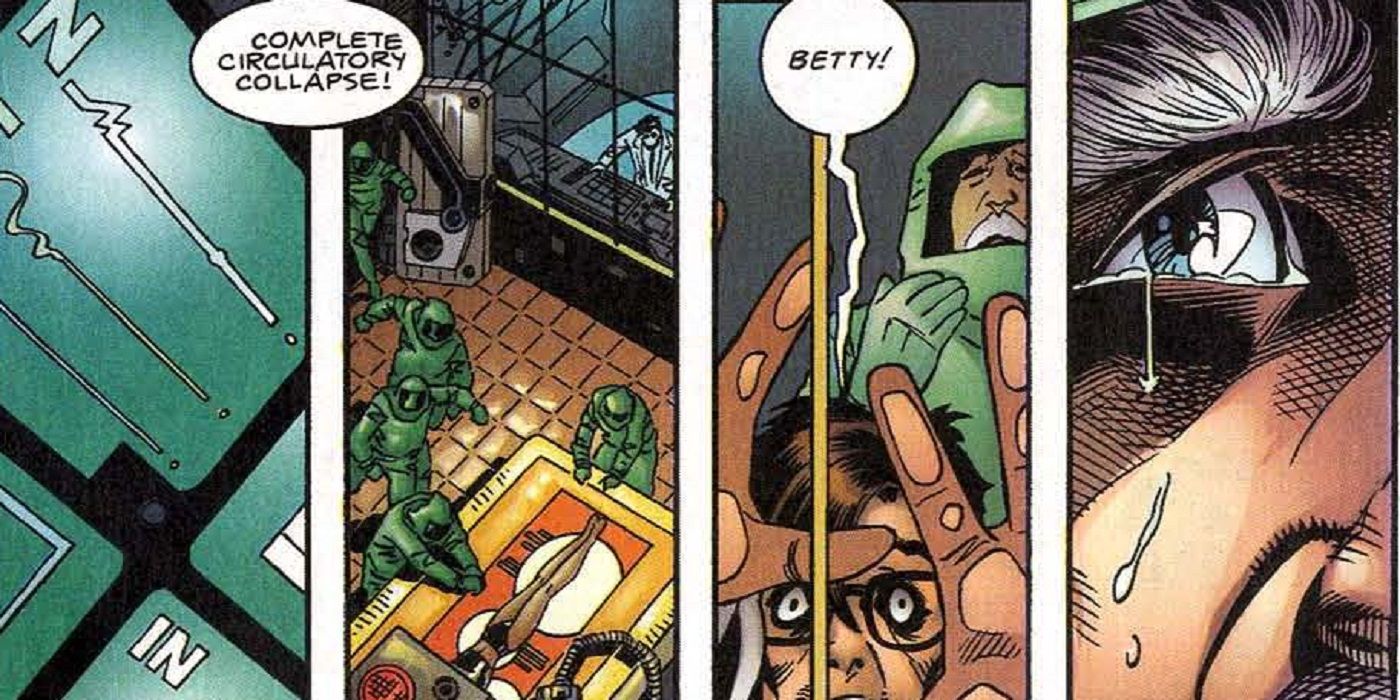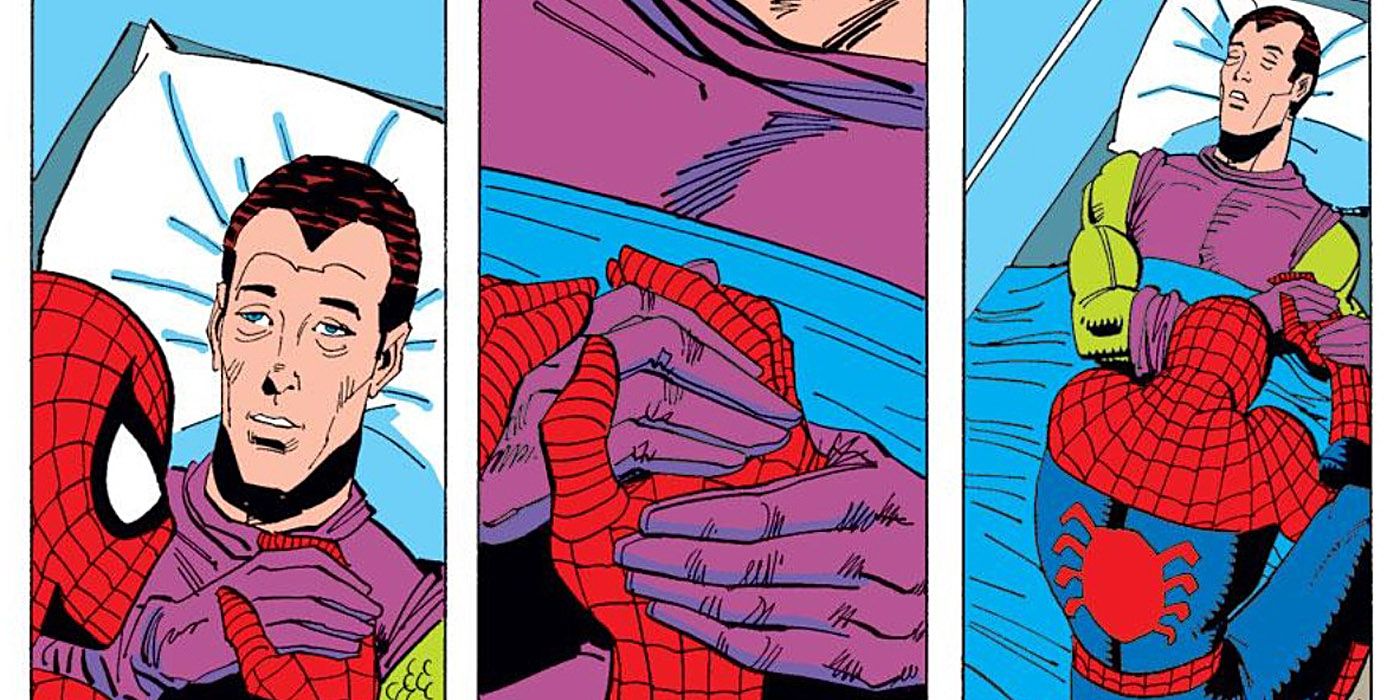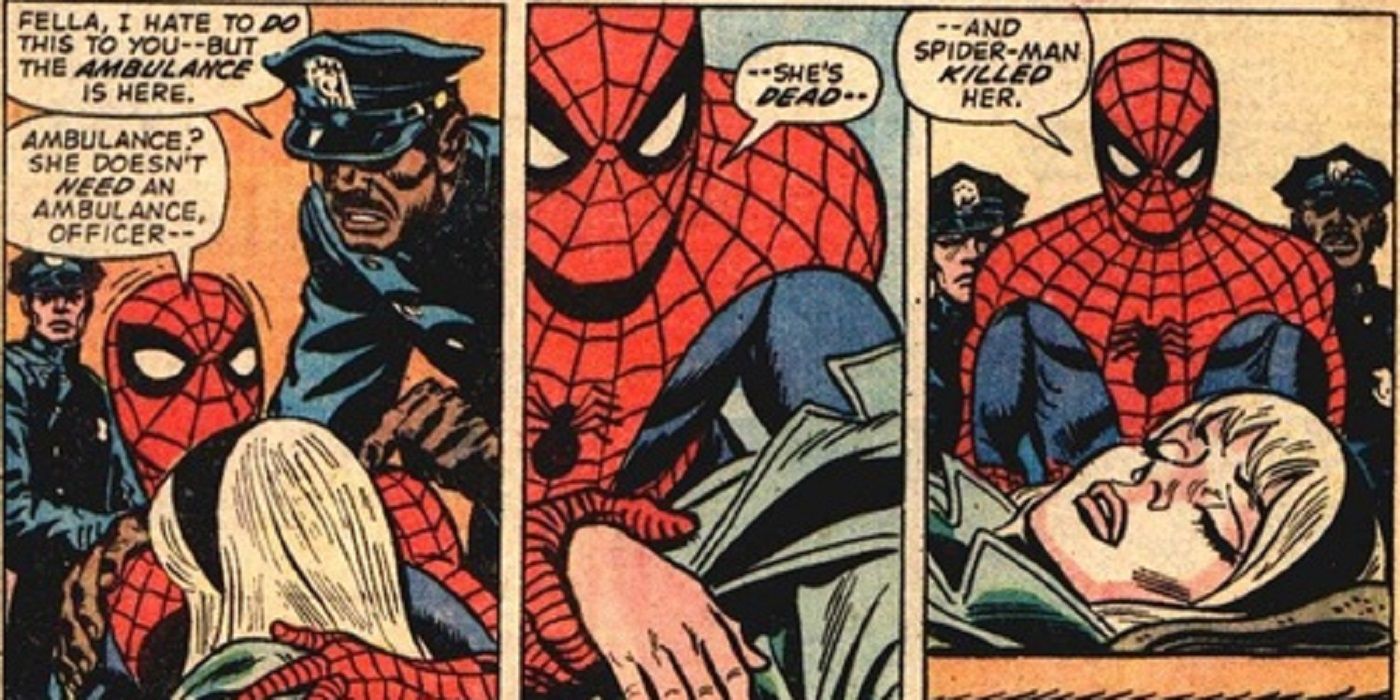In superhero comics, the costumed crusaders may steal the limelight and get the fame but it's often the supporting cast that helps drive the book along. The relationship between supporting characters and heroes has long been key to comics, with many titles having supporting characters almost as well-known as the heroes themselves.
RELATED: Without a Trace: 15 Missing Marvel Characters
Unfortunately for many supporting characters, although they fulfill a vital role, they're also frequently used as a plot device, with their deaths often used to create story possibilities. It doesn't matter whether the character is young or old, a new acquaintances or an old friend: supporting characters in superhero books are never far from the embrace of the Grim Reaper. To honor their sacrifice, we've collected 15 of the most heartbreaking Marvel deaths.
15 KAREN PAGE
The character of Karen Page is one that is integral to Matt Murdock's life. She first appeared in "Daredevil" #1 (1964) from the creative team of Stan Lee and Bill Everett. As the secretary for the law firm of Nelson and Murdock, the unrequited love between her and Matt drove much of the soap opera in the book's early years. Even after her departure as a series regular, she continued to have an impact on Matt's life. After becoming addicted to heroin, it was her sale of Daredevil's secret identity that led to Kingpin systematically destroying Matt's life in the classic "Born Again" storyline.
Karen would flit in and out of the book in the years after this, as her relationship with Matt ebbed and flowed. What was always apparent, though, was that these were two people who had seen each other at their worst and accepted each other despite -- and perhaps because of -- their failings. Her death in "Daredevil" #5, by Kevin Smith and Joe Quesada, saw her impaled by a Billy-Club thrown by Bullseye. Her loss was traumatic for Matt and her many friends, only deepening the enmity between him and Bullseye.
14 CAPTAIN STACY
If there's one Marvel character that's defined by his supporting cast, it's Peter Parker. Characters like Aunt May, J. Jonah Jameson and Flash Thompson are as familiar to comic fans as any heroes, having received significant development over the years. Such a strong cast has meant that the Spider-Man books have always succeeded in imbuing the adventures of Spider-Man AND Peter Parker with equal importance. The lengthy run on "Amazing Spider-Man" by J. Michael Straczynski featured some good stories but made little use of the supporting cast, meaning that many of them felt oddly detached from Peter Parker's world.
Peter has suffered many tragedies in his life, but one of the first was the loss of a man who was becoming a surrogate father to him: Captain George Stacy, the father of Peter's girlfriend Gwen. A loyal, decent man, Captain Stacy died a hero in "Amazing Spider-Man" #90 by Stan Lee and John Romita, saving a small child from falling bricks knocked down by Doctor Octopus. With his final words, he not only confessed that he knew Spider-Man was Peter, but also that he trusted him to look after his beloved Gwen.
13 LADY DORMA
For a character that has been around for almost 80 years, Namor: The Submariner, has never been associated with one romantic partner in the way that many of his counterparts have. In fact, it could be argued that he's best known for a relationship that he has never had: the unrequited attraction he has long felt for the Invisible Woman. When Namor was brought into Marvel's Silver Age in "Fantastic Four" #4 by Stan Lee and Jack Kirby, it wasn't long before he received his own series in the pages of "Tales to Astonish." This expanded his world, introducing Namor and readers to Lady Dorma, the woman who would become his great love.
Dorma had originally appeared in Namor's Golden Age adventures, but upon her reintroduction was made Namor's partner. It's fair to say that Dorma was a little possessive, attempting to kill Sue Storm due to Namor's interest in her. However, she soon became Namor's lover and companion, until she was killed by the evil Llyra, who had attempted to steal her identity.
12 DUANE FREEMAN
Duane Freeman is important for what he represents: the ordinary people caught up in a world of superhumans, trying their best to adjust. When the Avengers reformed after their spell on the Heroes Reborn Earth, Duane was assigned as their government liaison. First appearing in "Avengers" #4 by Kurt Busiek and George Perez, his relaxed, helpful style was a world away from the abrasiveness of Henry Gyrich. A huge fan of superheroes and a follower of their exploits, many of his traits seem like a prototype for Phil Coulson.
The tragedy of Duane's character was that while he genuinely wanted to help the team, some members distrusted him due to his membership of the Triune Understanding, a Philosophical Movement whose leaders were working against the Avengers. This led to some members, including Captain America and Iron Man, suspecting his motives or being abrasive towards him. When Kang the Conqueror attacked Washington D.C. in "Avengers" #49, Duane was one of the thousands of inhabitants that died, a fact that the Avengers didn't discover for some time. By then, it was too late. All that was left was for members to mourn him and regret their previous treatment of him.
11 GRANNY (EDNA) STAPLES
In 1990, when the New Warriors first received an ongoing series, part of the attraction was that, for the most part, the teen members were from normal families, dealing with all of the issues that this presented. Nova felt like a disappointment to his parents, Justice had an abusive home life and Speedball was caught in the middle of his parents' divorce. One of the most interesting backstories was that of Elvin Haliday, the youthful New Warrior and former Avenger known as Rage. While Elvin may have looked like a mean ol' fighting machine, in reality he was still a boy in his mid-teens who lived with his grandmother.
The relationship between Elvin and his Granny Staples was a close one. His parents were not around and she was his primary guardian, giving him some normality amidst the crazy life of a superhero. Unfortunately, members of the New Warriors found out that bad guys don't always make the distinction between a professional and a private life, when the street gang known as the Poison Memories went after their relatives. In "New Warriors" #37 by Fabian Nicieza and Darick Robertson, they set fire to Edna's home, killing her and leaving Rage bereft and seeking to live up to his name.
10 NATHAN LUBENSKY
In the years since she lost her beloved Ben Parker, poor Aunt May has not had the best of luck with romantic partners. Flirtations with Willie Lumpkin and Edwin Jarvis came to naught, while her recent marriage to Jay Jameson was tragically ended by his death. Jay's death means that May has now buried three partners. Overshadowed by the momentous loss of Ben Parker, in "Amazing Spider-Man" #336 from the creative team of David Michelinie and Erik Larsen, she was also forced to say goodbye to Nathan Lubensky.
Nathan's relationship with May had lasted for nearly 10 years, since she first met him at Restwell Nursing Home. The two soon became engaged, and while Nathan could often be crotchety and frustrated by his lack of mobility, Peter appreciated that he made his Aunt happy. Nathan's death arose from a confrontation between Spider-Man and the Vulture, with Nathan attempting to protect May and, as a result, being lifted into the sky and suffering a fatal heart attack.
9 MOIRA MACTAGGERT
Moira MacTaggert had been a recurring part of the X-Men titles ever since she was first introduced, by Chris Claremont and Dave Cockrum, in "Uncanny X-Men" #96. In the years following this, she was rarely the focus of major storylines being examined primarily through her relationship with other characters. She became Banshee's lover, a surrogate mother to Rahne Sinclair, and was forced to confront the terrifying threat of her son Kevin, better known as Proteus.
The four-part "Dreams End" crossover in 2000 saw Moira finally find a cure for the Legacy Virus, after years of fruitless work. During the course of this storyline Mystique attempted to reconfigure the Virus so that it only targeted humans. As part of her efforts, she destroyed the Muir Island research base and fatally wounded Moira. The oft-referenced past relationship between Moira and Charles Xavier was well-utilized in the desperate battle to save Moira's life. Charles was willing to follow her into the light, with only the combined efforts of Jean Grey and Moira herself convincing him to stay.
8 JIM WILSON
While Rick Jones is the Hulk's most famous sidekick, for a significant period in the '70s Jim Wilson became a regular supporting character in "The Incredible Hulk." Jim was absent from the series for more than a decade before returning in "Incredible Hulk" #388, where he told his friends that he was HIV positive. This was a controversial topic for Peter David to tackle, but the Hulk's reaction summed up his friendship with Jim: it didn't matter to him how Jim had contracted the disease, only that he needed his help.
This resolve was tested in "Incredible Hulk" #420 by Peter David and Gary Frank, where Jim Wilson returned to the series, his condition progressing to AIDS and ensuring that he didn't have long to live. Jim asked the Hulk for a transfusion of his blood, something that the Hulk -- unwilling to take the chance that another gamma-spawned monster might be created -- couldn't agree to. Jim's subsequent death left his friends distraught, but if nothing else, it did help to prompt discussion about AIDS. The letters page of the issue itself featured numerous testimonials from industry professionals whose lives had been affected by the disease in some way.
7 HAPPY HOGAN
"Happy" Hogan, created by Stan Lee and Don Heck, first appeared in "Tales of Suspense" #45. An ex-boxer, Happy was taken on as Tony Stark's personal assistant and chauffeur, developing a deep loyalty to his boss and a deep affection for Tony's secretary, Pepper Potts. Happy would go on to become a recurring presence in Iron Man comics through the years, his importance to the series being recognized by the fact that both he and Pepper were utilized in the Iron Man movies.
Part of Happy's attraction as a character is that he's the antithesis of Tony Stark. Better with his fists than words, happy with a takeaway as opposed to a dinner reservation, his character frequently helped bring out another side of Tony. Importantly, his moral compass was also integral in helping Tony keep sight of what was important. The death of Happy was originally conceived as the inciting event for the "Civil War" series, before the New Warriors replaced him as sacrificial lambs. Unfortunately, this was just a temporary reprieve. Short months later, he fell into a vegetative coma after being kidnapped by Spymaster, with Tony and Pepper making the decision to turn off his life support machine.
6 AUNT MAY
First appearing in "Amazing Fantasy" #15, by Stan Lee and Steve Ditko, Aunt May was an integral part of the Spider-Man mythos, providing Peter with a happy home life after the loss of his parents. While the relationship between May and Peter was genuine, over time some readers grew frustrated with the character. While writers such as J.M. DeMatteis wrote a strong, independent Aunt May, others portrayed her as an elderly woman who was a walking plot device: her health problems often being used to provide problems for Peter.
After years of illness, Aunt May's death, when it finally arrived in "Amazing Spider-Man" #400, was not unexpected. What was more surprising was how genuinely emotional it was. J.M. DeMatteis and Mark Bagley were at the top of their game, with the story filled with heartfelt moments. The exclusion of Ben Reilly from May's bedside and Aunt May giving her blessing to Peter's life as Spider-Man were among the moments that made this feel like a genuinely significant farewell. Inevitably, even a death such as this wasn't immune to a retcon and it was later revealed that the Aunt May who died was a genetically altered actress.
5 ILLYANA RASPUTIN
Illyana Rasputin, the New Mutant known as Magik, was first introduced in 1975's "Giant-size X-Men" #1. After some years appearing as a background character, in "Uncanny X-Men" #160 she was trapped in Limbo. During her stay there she aged seven years, became a sorceress and developed the mutant ability to teleport. She would later join the New Mutants, and fought beside the team for several years. Illyana often struggled with her ties to Limbo and the demonic nature inside her, culminating in her sacrificing her power in "New Mutants" #73, returning her to the form of a seven year old.
After the murder of her parents, Illyana once again returned to the X-Men, when it was revealed that she was infected with the Legacy Virus, the mutant disease for which there was no known cure. Her final fate was shown in the heartbreaking "Uncanny X-Men" #303 by Scott Lobdell and Richard Bennett. In this, a bedridden Illyana finally lost her fight against the virus, but where the issue really excelled was in showing the family bonds between the X-Men. Kitty, Colossus and Jubilee were all spotlighted as the team struggled to cope with the unfairness of the horrendous disease.
4 JARELLA
While Betty Ross may be known as Bruce Banner's greatest love, the Hulk found happiness for a time with a green-skinned princess named Jarella. She was originally introduced in "Incredible Hulk" #140 as princess of a subatomic world called K'ai. The Hulk and Jarella were often separated over the next few years, but she was unique in that she loved him unconditionally, whatever the current nature of his relationship with Banner. When Jarella and Hulk were transported to Earth it finally seemed like the Hulk was on course for a long overdue happy ending.
Sadly, this was not the case. In "Incredible Hulk" #205 by Len Wein and Sal Buscema, a battle between the Hulk and the Crypto-Man saw Jarella save a child from falling debris, at the cost of her own life. This loss nearly broke the Hulk and as hard as the death was to read, the next few issues were even more affecting. A desperate Hulk sought out the help of others to revive Jarella, including Gamma Base and the Defenders. However, nothing could be done, with the image of Valkyrie comforting a weeping Hulk being one of the most memorable of the era.
3 BETTY BANNER (ROSS)
The great love of Bruce Banner's life, Betty was originally introduced in "Incredible Hulk" #1, by Stan Lee and Jack Kirby. The daughter of General Thaddeus "Thunderbolt" Ross, she nursed an affection for the reserved Bruce Banner that soon developed into a romance. Bruce's transformation into the Hulk ensured that the course of true love never ran smoothly. Nevertheless, despite marriages, bereavements and separations, the two reconciled during Peter David's epic run on "Incredible Hulk," with their relationship becoming stronger then ever.
However, as is often the case for the Hulk, happiness can never last for long. Bruce awoke one morning to find Betty an apparent victim of radiation poisoning, for which he blamed long-term exposure to himself. The resulting struggle to save her life was gripping reading, as Bruce, and Betty's father, cast blame and faced up to the potential loss of the woman they both loved. Her death, in "Incredible Hulk" #466, by Peter David and Adam Kubert, may have ultimately been reversed, but it remains one of the most gripping and tragic single issues of any Marvel comic.
2 HARRY OSBORN
Despite his wealth and the Osborn family name, poor Harry was a character who always struggled with his demons. He had a distant relationship with his father, Norman, and was constantly made to feel like he was a disappointment. For a time he took solace in pills and even had a short-lived stint as the Green Goblin, but it eventually seemed as if Harry had made peace with his demons. Married to Liz Allen and a doting father to Normie, it finally seemed as if things were going Harry's way. Which of course meant that it couldn't last.
Harry's slow mental breakdown and his resulting resumption of the Green Goblin identity is one of the most gripping story-arcs in Marvel history. Over a multi-year period in "Spectacular Spider-Man," J.M. DeMatteis and Sal Buscema crafted a tale that saw not only the Green Goblin vs. Spider-Man, but also Harry Osborn vs. Peter Parker. The tragedy of two best friends fighting each other gave the story an emotional core, one which the end of Harry's story perfectly captured. The final pages of "Spectacular Spider-Man" #200 were left silent by DeMatteis, with Buscema's art perfectly capturing the goodbye between two best friends.
1 GWEN STACY
"Someone close to me is about to die... but who?" exclaimed Spider-Man on the cover to "Amazing Spider-Man" #121, in front of a collage of his supporting cast. Famously, the victim was Gwen Stacy, a devastating blow that would change Peter's life forever. When the Green Goblin knocked Gwen off the Brooklyn Bridge, arguments over whether the fall or Spider-Man's webbing killed her became academic. All that mattered was that Peter had lost the love of his life, the woman that he had long hoped to marry.
The significance of Gwen's death can be seen in countless ways. The scene has become an iconic one, shown in "Amazing Spider-Man 2" and homaged in countless comic books. Gwen's death has even been used by some comic historians as the point where the Silver Age of comics ended, her death bringing to an end the period that had seen new heroes arrive on the scene, filled with optimism and hope. Gerry Conway and Gil Kane not only crafted a heartbreaking story, but changed the course of Peter Parker's life forever. Gwen may have returned in a variety of forms over the years, but she'll always remain Peter's greatest loss and greatest love.
Have we tugged your heartstrings or are these characters simply gone and forgotten? Let us know in the comments, and give us suggestions for your most affecting deaths!

